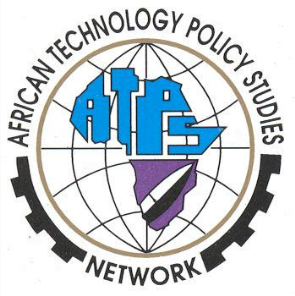WE NEED TO GO MICRO SCIENCE
Disclaimer: The information and opinions expressed on this page do not necessarily reflect the views of the ATPS Network.
Posted on 12th February, 2013by Mr. Onsare Robert
BY ROBERT OKEMWA ONSARE
Technological divide will keep on growing betweendeveloped and developing countries so long as new approaches are not adopted inthe teaching of sciences and mathematics at primary and secondary schools.
Most Kenyan secondary schools laboratories are ill-equipped for thestudents to carryout experiments; thus students perceivesciences as dull, theoretical and abstract. They then fail to relate what they are taught withits application inthe real world.
Science will remain to be an abstract pursuit tolearners so long as they are not exposed to its real application in dailylives. Technology will never be appropriate if students are not afforded meansof contextualizing it – this should earnestly begin in our laboratories.
Indeed it is a challenge to expect overnightsufficient equipmentfor more than 4,000 secondary schools laboratories across the nation – toleap frog science learningfrom its present wanting status. With Kenya’s ambitious vision to beindustrialized by 2030,we need to go micro science using modern technology that is cheap, in thepursuit of chemistry and physics thus most schools can afford facilities.
Indeed, physical sciences are the worst hit in mostKenyan schools from lack of access to laboratory facilities, because, biologicalsciences draws most of its practicallearning materials from nature.Micro-sciencecost is reasonable for Sh15,000 you can buy a kit and chemicals for doing experiments for 40students, for awhole year. As-much -as we are stuckin macro-science: learning sciencethroughcurrent mode, facilities is a challenge while the scientific ground has shifted beneath us.
We’re in the era of nano measurements, microchips, and milligrams(mg) quantities. However thegreatest challenge in adapting this’ new technology is retraining the teachersin macro-science. We haveto accept that the world is going small and smaller. When students graduate theyare going to usesmall (micro) qualities in their scientific pursuits.
Nevertheless all chemistry and physics practicals can bedone by harnessing microchemistry. Huge costs involved in the purchase of bunsen burners, gascylinders andrefilling the cylinders will be history – oil burners energy will be sufficient.This will bridge thegapof lack of facilities, that is prevalent in most schools in Kenya save for nationaland some provincial schools. In learning electricity, electronics, magnetism, semiconductors, solenoidsin physics – micro-physics will become handy.
Forscience to play its rightful role as an agent towards industrialization;teachers need to beretrained to appreciate science more than before; be armed withnew methods of disseminatingscience and be horned with newideas onthe evolving technologies.
Yes, colleges and universities which are thetraining ground for teachers needs to embrace micro science for their graduatesto understand and appreciate the application of micro science. It’s a positive to note that our localinstitutions of higher learning are positioning themselves towards electroniclaboratories. Multism and multlab virtual programs are gaining ground intechnical and engineering learning to cite examples. This should be the case inpoint with micro science.
The abovenotwithstanding what imprisons the Kenyan learning environment is that we go toschool to secure qualifications that will afford us a job– not necessary forlife.If we were learning for life there will be a more practical approach torealities of life than we are experiencing at the moment. Are our graduatesfrom the different levels of education systems agents of change? scientifically,morally, spiritually or socially? I believe the answer is we have miles tocover.
However, if we’re training for job, we need toexpand our job market – attract investors and entrepreneurs who can open up theKenyan industry. Overthe years, job opportunities for science graduates have been dwindling,thus stifling motivation from (earners in schools to pursue pure andapplied sciences with enthusiasm.
Kenya needsto invest in cheap sourceof electricity to add value to our raw resources before exporting. For example,process titanium, sodium chloride and coal to their end products. Titanium metal is inhigh demand in aero-industry (making of planes, shuttles, ship), it is with thisbackground that the Kenyan scientific, technological and engineering associationsneed to scale and employ new approaches of promoting scientific uptake towardsa technological convergence that will usher in a practical scientifictransformation in this nation.
The above associations have a challenge to muster their acumen to seethat theoretical knowledge impacts the society positively, is transferred tothe industry and research findings are integrated in government policy framework.
As scientists, technologist and engineers – we are struggling to see thatwe are part of the answer to the problems that are biting us.
For example, during the last water crisis that wewent through as a nation – Pan African Chemistry NetWork (PACN) held aconference at Chiromo Campus, University of Nairobi dubbed as sustainable waterfor development – researchfindings, study cases and researchpapers were shared on how to overcome such a challenge presently and in future.Now the question is: is the report thereof being implemented? Do we havescientist with unrelenting passion on the same? Have Kenyan scientist mustereda diplomatic acumen to win the political leadership support hence channelingthere reports into transformative policies?
It is noteworthy that the PACN conference winded upwith a workshop on green chemistry which looked into means of cupping waste andpollution atthe manufacturing level. Are we seeing any impact on the same?
It is evident science is one of the basic answer to theprevailing problems we are going through as a nation. Thus we cannot afford to neglect to adoptrelevant and cheap means of disseminating science at primary and secondary school levels; whichare the fortress of future Kenyan scientist Micro-science is the way to go.

